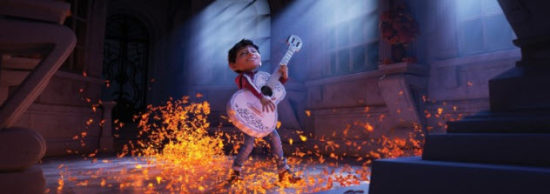New Universal Scene Description (USD) based architecture, advanced lighting technology Pixar Unified, the promise of speed increase and more in the latest release.
by Roger Wilsher

The latest release of the new version of production renderer RenderMan was announced by Pixar Animation Studios. Version number 22 comes on the 30th anniversary of the company’s founding. The new version, RenderMan 22, brings in new features that speed up workflows for industry professionals. In particular, Pixar’s Live Rendering delivers continuous photorealism right in the applications.
With always-on live rendering at every stage of the pipeline, enabled by a new Universal Scene Description (USD) based architecture for scene handling, artists can now enjoy fluid feedback, improving iteration speed throughout the production workflow. This revolutionary approach will bring new ways of collaborating in all aspects of the filmmaking process, including animating, shading, lighting or modeling, and transform current work pipelines throughout the industry.
The RenderMan tools for other software, including Autodesk’s Maya, Foundry’s Katana, and SideFX Houdini have been updated alongside the new version to deliver the live rendering performance and interactive editing options that the industry has been asking for.
As Pixar themselves note, “Previously artists may have had to restart renders to see their changes to their scene. We’ve removed many of the restrictions that require users to restart a render or wait for feedback.”
In addition to this core change in the filmmaking process, Pixar Animated Studios have also enhanced several other features in this new version, including advanced lighting technology used on Pixar’s own movies such as Incredibles 2 and Finding Dory. Known as Pixar Unified, this technology allows artists to improve all aspects of the product, with higher quality imagery and much faster production times as well.
The new lighting tool allows artists to choose from unidirectional or bidirectional path tracing on a per-light basis within a scene, allowing the flexibility to always choose the best for any situation. This process includes state-of-the-art tech that is based on work carried out by Disney Research on computer learning, which more accurately deals with indirect light being guided by light paths. Another core feature of Pixar Unified is photorealism delivered without extensive delays, ensuring that results are clear in realtime, and artists can see changes as they are made.
In addition to new features, the big talking point about RenderMan 22 is the promise of speed increase, which can impact workflows more than almost any other aspect of the software. With a speed increase of up to 100% thanks to an architecture redesign. FXDesign published a valuable update base on an FMX session delivered by Pixar’s Dylan Sisson. Sisson attributes much of the speed up to the effort Pixar has put into streamlining the ancient Renderman code. Sisson said RenderMan reduced its code base by 30% and called it “the great dejunking of 2018.”
The company is engaged in a major and ongoing rearchitecting of Renderman, which it has been showcasing over the past year. It will culminate in Renderman’s participation at Siggraph. In fact, Sisson is among the speakers listed in Pixar’s announcement of the talks and festivities. As a side note, last year at Siggraph, Pixar revealed their work on XPU, which will allow the software to access both CPU and GPU for interactive and final renders. The trick is Renderman can render identical pixels using the CPU or GPU. XPU is not included in Renderman 22, but it is not going too far to call it a major inflection point that is right on the horizon. More news is coming for Siggraph 2018.
017 RenderMan Science Fair | Part 6b | What’s Next? RenderMan XPU from Pixar’s RenderMan on Vimeo.
Pixar CTO Steve May is, perhaps unsurprisingly, very happy with the new version, saying, “the new RenderMan technology is already changing our pipeline. We are moving to take full advantage of its interactivity and scalability. New workflow options will also open as we add direct RenderMan integration with Pixar’s Universal Scene Description.”
RenderMan 22 is available now for download for customers on maintenance contracts. Individual licenses of RenderMan are available for $595, and $250 for yearly maintenance.





